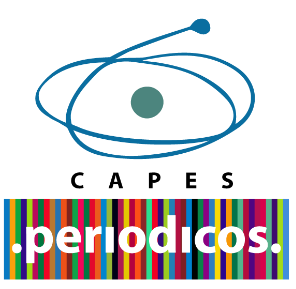Evaluation of allowed parameters for nickel in freshwater bodies using the Allium cepa test
DOI:
https://doi.org/10.5433/1679-0367.2014v35n1p49Palabras clave:
Environmental mutagenesis, Heavy metals, Genotoxicity, Mutagenicity.Resumen
Nickel compounds are disposed in large amounts in the environment, making it an ecotoxicological relevant contaminant, since these can bioaccumulate along the food chain and/or can cause DNA damage to the exposed organisms. In this sense, Brazilian law establishes 0.025 mg/l as the utmost boundary for the total nickel concentration allowed in freshwater bodies that consists in a quarter of the established by United States Environmental Protection Agency (EPA). This study evaluated three nickel concentrations, in nickel chloride (NiCl2) shape, having as reference the limit established by CONAMA (National Environmental Council), using seeds of Allium cepa, in order to measure the cytotoxic, genotoxic and mutagenic potentials of this element. At such concentrations, it was not observed toxicity or cytotoxicity, whereas for all three concentrations employed, there was induction of genotoxic and potentially mutagenic effects, especially cells bearing micronuclei, buds and chromosome stickiness. Thus, it is inferred that nickel chloride has aneugenic and/or clastogenic action. This study is also an alert for the water contamination by metals, since both concentration used, the lowest one and the one permitted by Brazilian law induced damage to the tested organism. The study suggests the necessity of review in the established parameters for such metal in freshwater bodies.Descargas
Descargas
Publicado
Cómo citar
Número
Sección
Licencia
Derechos de autor 2015 Semina: Ciências Biológicas e da Saúde

Esta obra está bajo una licencia internacional Creative Commons Atribución-NoComercial 4.0.
Semina: Ciências Biológicas e da Saúde adota para suas publicações a licença CC-BY-NC, sendo os direitos autorais do autor, em casos de republicação recomendamos aos autores a indicação de primeira publicação nesta revista.
Esta licença permite copiar e redistribuir o material em qualquer meio ou formato, remixar, transformar e desenvolver o material, desde que não seja para fins comerciais. E deve-se atribuir o devido crédito ao criador.
As opiniões emitidas pelos autores dos artigos são de sua exclusiva responsabilidade.
A revista se reserva o direito de efetuar, nos originais, alterações de ordem normativa, ortográfica e gramatical, com vistas a manter o padrão culto da língua e a credibilidade do veículo. Respeitará, no entanto, o estilo de escrever dos autores. Alterações, correções ou sugestões de ordem conceitual serão encaminhadas aos autores, quando necessário.

Este obra está licenciado com uma Licença Creative Commons Atribuição-NãoComercial 4.0 Internacional.

















